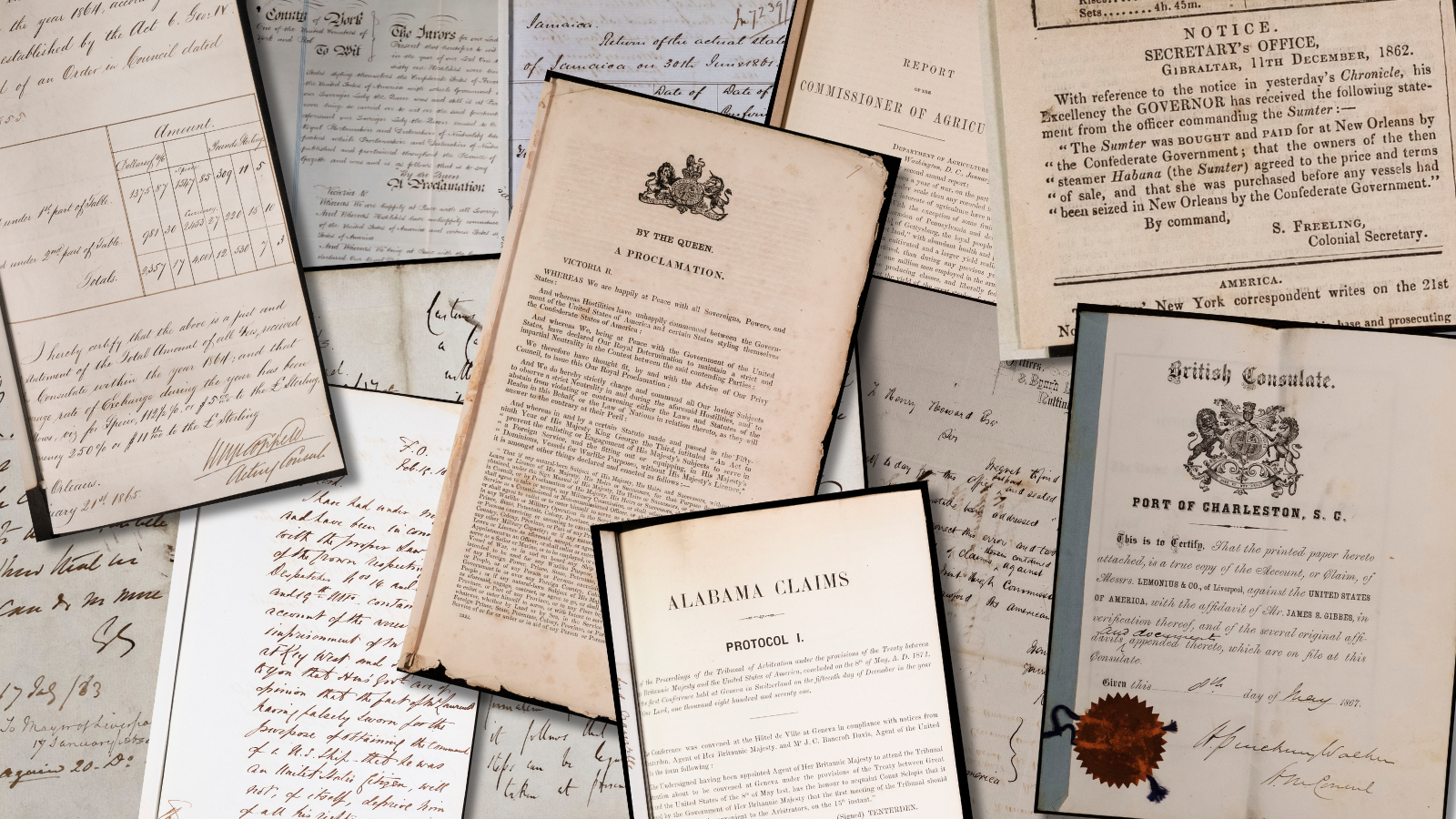│By Emma Harris, Associate Editor, Gale Primary Sources│
A fundamental topic in American history, the American Civil War (1861-1865) was a major event of the nineteenth century, not just in America but also in global politics, with ramifications for the future of slavery and ideas of popular, democratic government. Lecturers and researchers have increasingly been looking to study the war in its international context as the trajectory and outcome of the war impacted those beyond just America—especially in Europe.
Not only did the Unionists and Confederates seek to strengthen diplomatic and trade relationships with Europe to aid their cause, while also sending agents overseas to spread propaganda, but many Europeans, both immigrants and those from abroad, volunteered to fight in the war. Britain’s involvement saw trade and moral causes in battle, as slavery – which had been abolished in Britain – played a large role in the war, yet supporting the Unionists threatened vital trade that Britain had with the South and many jobs depended upon.
Answering this call, in December 2024, Gale Primary Sources released The American Civil War: The International Context, the first digital archive of its kind with a unique corpus of primary sources from a variety of international locations across Europe.
Unionist and Confederate Propaganda Newspapers
One of the key features of the archive is its multi-layered set of sources that offer a range of perspectives on the conflict, including the two London-based newspapers, The London American and The Index – pro-Union and Confederate propaganda journals, respectively.
![Front page of The Index. A Weekly Journal of Politics, Literature, and News. [Devoted to the Exposition of the Mutual Interests of Great Britain and the Confederate States of America.], vol. 3, no. 61, 25 June 1863.](https://review.gale.com/wp-content/uploads/2025/01/1-1.jpg)
Both the Unionists and the Confederates sent agents over to Britain to influence opinion and support for their cause – Henry Hotze, being one of the Confederate agents who set up The Index in 1862, whose papers can also be found in The American Civil War: The International Context. Hotze amplified messages of self-determination, lower trade tariffs, and cotton shortages to appeal to Britain as a result of Union blockades on Southern ports, while working with his team at The Index to publish pieces that emphasised shared values between Britain and the Confederacy.
Though the newspaper was popular, particularly amongst aristocratic readers, The Index’s pro-slavery stance contested Britain’s abolition of slavery which was ultimately a moral cause that kept them from fully supporting the Confederacy.
The Index was inspired by its Fleet Street neighbour, The London American – a journal set up in 1860 by American Northerner, John Adams Knight, and originally created to provide American-related news and transatlantic trade updates to US citizens living in London. It later became a medium for Union propaganda.
![Front page of "London American." London American, 25 Feb. 1863, p. [1].](https://review.gale.com/wp-content/uploads/2025/01/2.jpg)
What was interesting about The London American’s approach in comparison to The Index, was how it shared hostilities towards the Confederate cause, but also towards Britain. In an attempt to dissuade Britain from becoming entangled in the conflict, the newspaper promoted opposing values to nineteenth-century Britain, such as anti-monarchist and anti-aristocratic rhetoric, while writing articles with the motivation of instilling fear into Britain should they get involved.
Cotton and Other Industries
While Britain adopted a stance of neutrality during the American Civil War, as seen in the proclamation below, that did not mean it remained unaffected or uninvolved. A key concern for the British during the war was the economic hardships at home that could come from interruptions to the importation of cotton from the South.
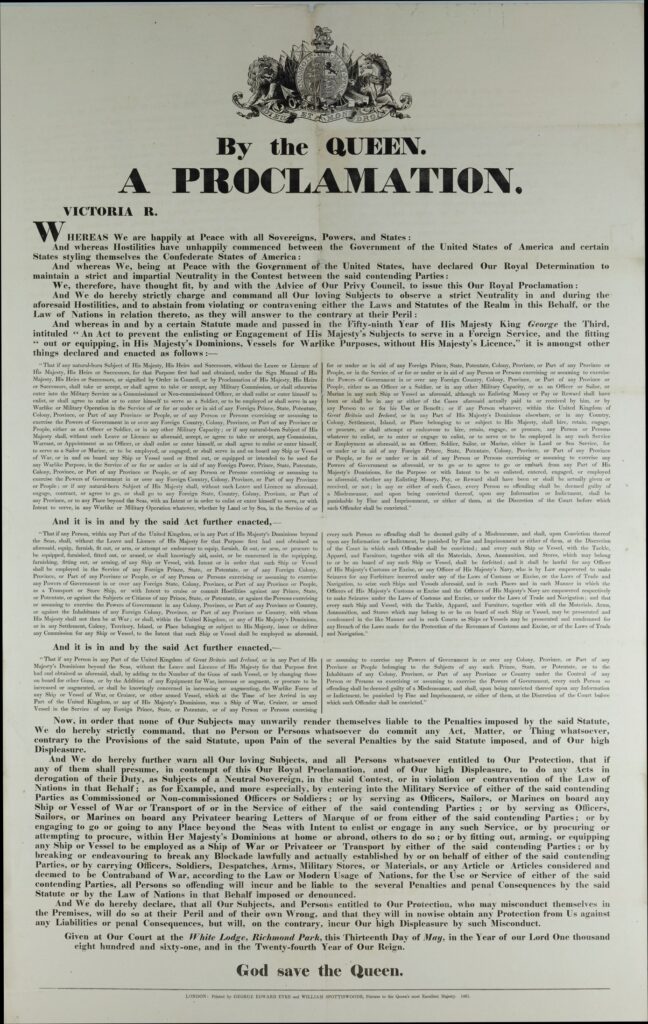
In the mid-nineteenth century, Lancashire was known as the cotton capital of the world, and along with Liverpool and the Wirral, the cotton industry boomed there, relying heavily on cotton imported in from the Deep South. Britain, especially in these areas, had deep economic ties with the southern states, which the South used to purchase munitions and have ships built, such as the CSS Alabama.
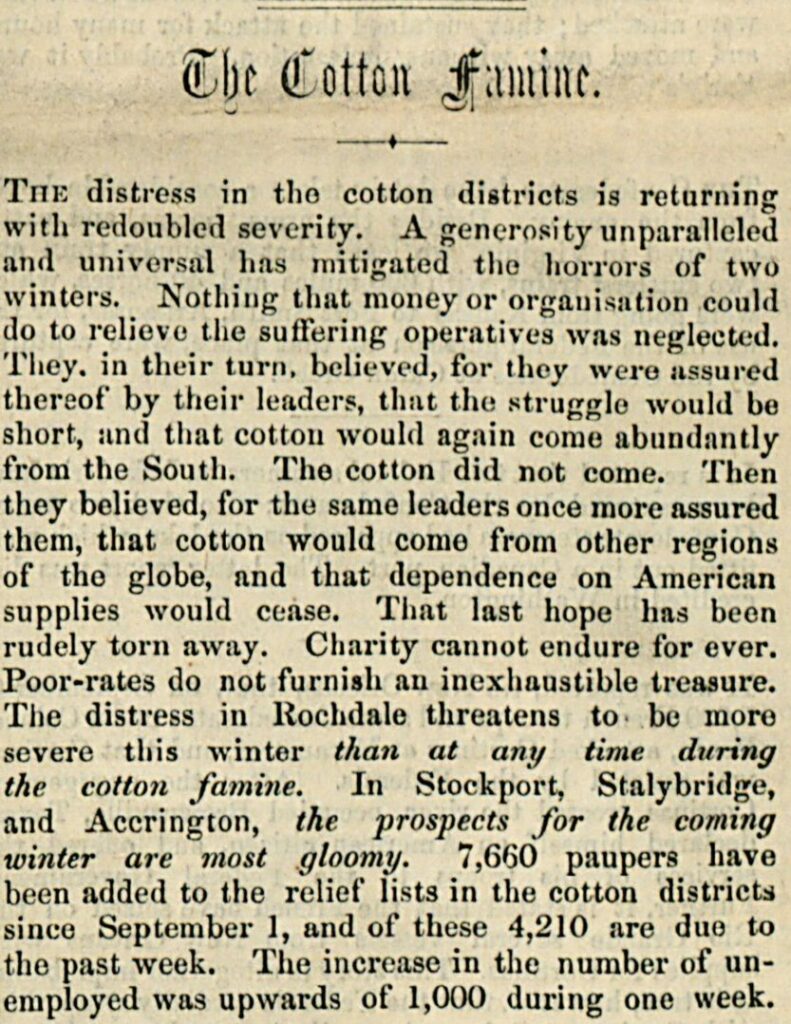
Cotton shortages were especially felt by Britain in the winter of 1862-3, which led to high unemployment rates in places like Lancashire, especially, as well as even famine. Hence why Confederate propaganda regularly pulled this card to try and garner British support, such as in the article above.
Cotton, though, was not the only industry affected, and some saw increased business such as shipbuilding. Material from The Archives Centre, National Museums Liverpool also provides personal papers of individuals such as George Busk Crow and his family, who detail how the war affected their shipping business which mostly dealt with timber. Moreover, papers and drawings from companies such as Fawcett Preston Engineering Co, Ltd. highlight the impact on the munitions and engineering industries.
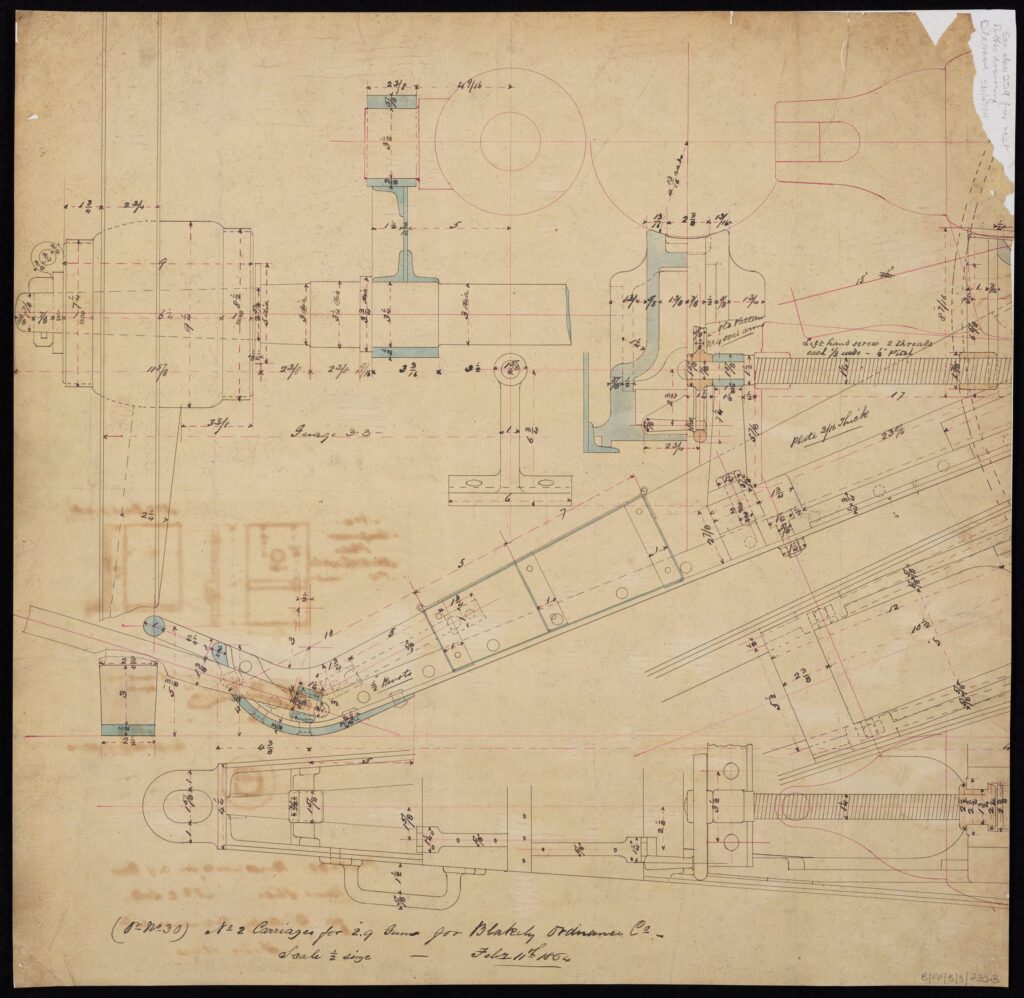
Perspectives Across Europe
Nevertheless, Britain was not the only international location both involved and affected by the American Civil War. The American Civil War: The International Context contains a wealth of material from source libraries across Europe, including from the Nationaal Archief, in the Netherlands, and the Rigsarkivet, in Denmark, offering documents in both Dutch and Danish.
Like the British, the Dutch also attempted to maintain neutrality during the conflict, despite Confederate sympathies from the Dutch ambassador at the time, MR. T M Roest van Limburg. The archives of both the Dutch Legation in the United States and the Ministry of Foreign Affairs include a wealth of correspondence, often from Dutch consuls in America highlighting their experiences of the conflict.
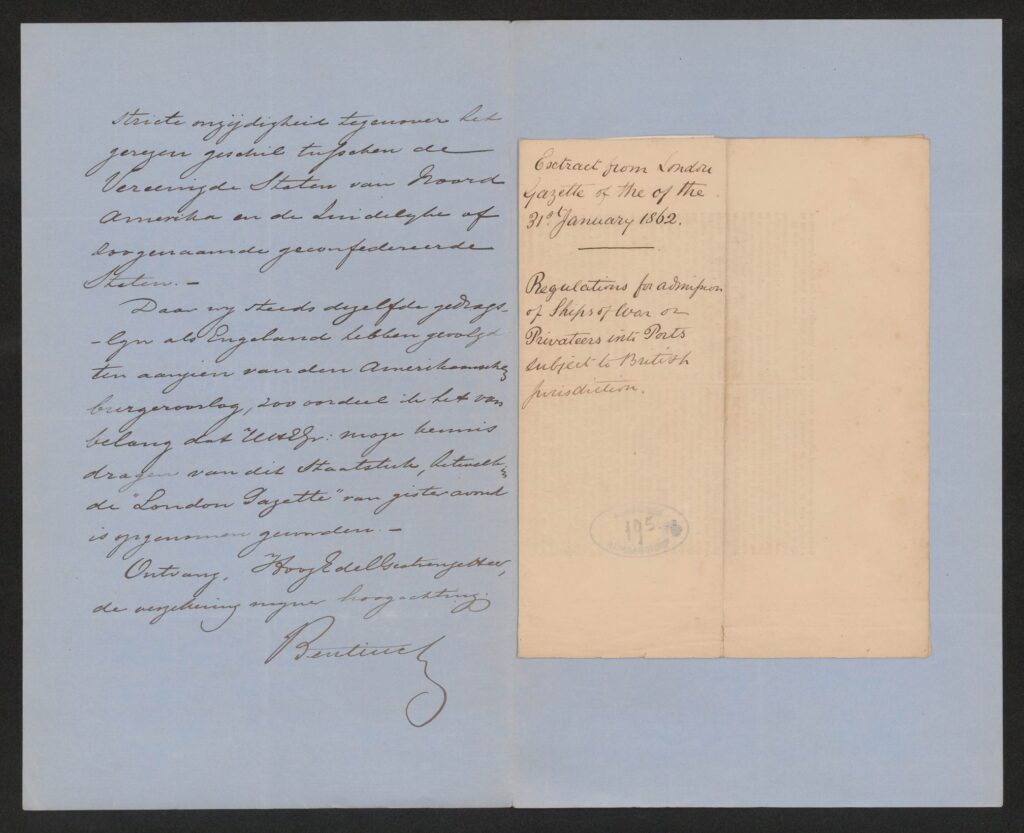
Beyond this, the Dutch West Indies were targeted by Lincoln’s administration during the war, particularly Suriname, with the intentions of being a location for the colonisation of freed African Americans, discussions of which can be found amongst papers and correspondence from the Dutch Ministry of Foreign Affairs.
Still, the Netherlands were not alone in Lincoln’s plans, and the Danish West Indies were also identified for colonisation, specifically the island of St Croix, negotiations with which were some of the earliest pursued. Minutes of proceedings of the St Croix City Council throughout the 1860s feature heavily in the material digitised from the Danish Central Directorate for the Colonies, West Indies, and highlight the role that the Danish and Dutch were encouraged to play during the American Civil War.
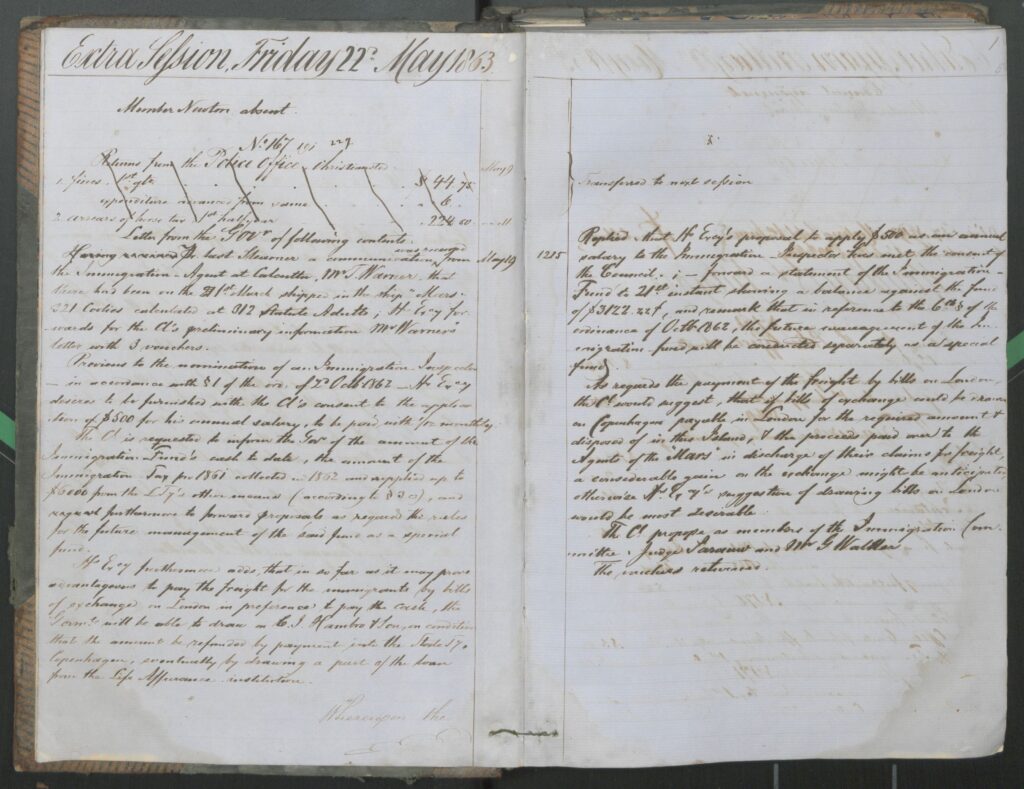
Illuminating International Perspectives
The American Civil War: The International Context brings together European historical sources that illuminate the involvement of the continent in the history of the Civil War in America—their internal discussions, their reactions to approaches by Union or Confederate representatives, the challenges and advantages that the American conflict brought to their borders and shores, as well as its impact on their own internal politics and society.
If you enjoyed reading this blog post, check out these below:
- China and Australia: Trade, Migration, and Politics in the Nineteenth to Early Twentieth Centuries
- The Dutch Raid on the Medway, 1667
- Soviets and the Spanish Civil War
Blog post cover image citation: a collage of images from The American Civil War: International Context digital archive.

